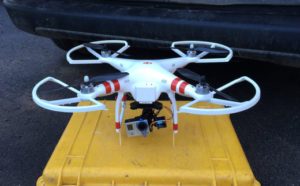 A British construction engineering firm is hopping on the drone train along with several key players in the its industry.
A British construction engineering firm is hopping on the drone train along with several key players in the its industry.
British news site Construction Health and Safety reports that Costain will expand its efforts in adapting drone tech for its projects.
Citing money and time savings, Costain’s Aerial Solutions Manager Peter Slater said the shift is an evolving process which began two years ago when the company trialed a DJI Phantom survey drone over a nine-mile road-building project in Northern Ireland.
“We have been developing an understanding of how and where the technology can deliver projects more efficiently and safely,” Slater said.
“One of the main drivers of the work comes down to taking people out of hazardous environments. In addition, improvements in speed, efficiency and payload make this a technology with high potential,” he added.
Costain expects to use UAVs to inspect buildings and conduct topographical surveys. Slater said the firm sees drone investment as a fiscal and safety issue since inspecting old or sub-par buildings can cause potential harm to human workers trying to reach the nooks and crannies.
Although the company plans to use conventional high-definition video cameras, they also will add thermal imaging, LIDAR and radar components to the drones.
“We’re speaking to industry leaders in the UAV technology space and getting them to understand our needs and our customers’ needs.”
“We have working relationships with a number of suppliers and will create a framework agreement with sector-specific suppliers that can cover a range of requirements.”
The company expects to see immediate cost savings since they will reduce the hiring of manned aircraft.
“Using a real aircraft there are limitations on how low it can fly, and weather can reduce visibility, whereas using a drone you can hover and get in close to structures,” deputy project manager John Lee said in 2014.
A recent industry white paper backs up Lee’s enthusiasm: “In the [construction and] inspection world, unmanned aircraft have a distinct cost and safety advantage over using people on ropes, ladders, scaffolding, and bucket trucks.”
“The simple truth is small drones—in particular multirotors—can fly lower and closer than traditional aircraft and capture more useful and detailed information.”
Source link
 Unmanned Aerial Vehicle The latest drone news
Unmanned Aerial Vehicle The latest drone news



